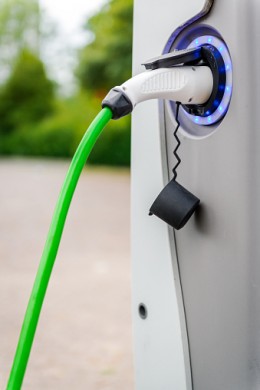 In just 15 years, lightweight aircraft could be powered by new, lithium-ion batteries. These aircraft are likely to be the “flying cars” made of lightweight material and powered by superconductor technology. They will also be able to take off and land using much less space, making obtaining a pilot’s license the new rite-of-passage, possibly replacing the driver’s license.
In just 15 years, lightweight aircraft could be powered by new, lithium-ion batteries. These aircraft are likely to be the “flying cars” made of lightweight material and powered by superconductor technology. They will also be able to take off and land using much less space, making obtaining a pilot’s license the new rite-of-passage, possibly replacing the driver’s license.
A brief history of electric planes
The history of electric aircraft is short. The Tissandier brothers flew an electric-powered airship in the 1880s, but it wasn’t until 1970 that electric planes started to become slightly more commonplace. Some early experimental electric planes were solar-powered, but those planes were not developed into the planes we see today. In 2007, Randall Fishman flew a battery-operated tricycle hang glider at Airventure Oshkosh. Fishman has since continued experimenting and designing motored gliders powered by battery. He’s not alone, either — a European Aeronautic Defense and Space Company (EADS), the original name for Airbus Group SE (or “societas Europaea,” Latin for European company), crew flew an electric plane in 2009, and Chinese aircraft manufacturer Yuneec’s team appears to be close to selling an electric-powered plane to the public.
Technology advances for climate security
In the trend of all things electric, the potential for zero emissions has great appeal. Current attitudes about carbon dioxide and its impact on the environment are pushing the value of electric flight. Just as sales of electric cars are increasing by as much as 500%, the desire for quiet, efficient, clean airplanes is likely to increase just as quickly.
Range is the key to electric flight
While there is plenty of interest from pilots, early electric aircraft don’t yet provide the range for anything beyond short flights. To date, there are no electric aircraft on the design tables that are capable of long-distance flights. Until the advent of the super battery, electric planes will likely remain limited in their capabilities.
Training on electric airplanes
The commercial side of electric planes may, however, be less about taking lots of people from here to there and more about teaching new pilots how to fly. Flight schools are taking a serious interest in electric planes because they are less expensive, simpler to fly, and quieter — allowing them to operate in regions with noise controls in place. In the near term, the flight school administrators may gobble up the planned production of electric planes and use them to teach new pilots the art of flying.
Contact L & L International if you need assistance in purchasing or selling a private jet. You can reach our sales specialists today at sales@L-Lint.com, call us any time at +1.305.754.3313, or visit us online.
[/et_pb_text][/et_pb_column][et_pb_column type=”1_4″][et_pb_sidebar admin_label=”Sidebar” orientation=”right” area=”sidebar-1″ background_layout=”light” remove_border=”off”] [/et_pb_sidebar][/et_pb_column][/et_pb_row][/et_pb_section]